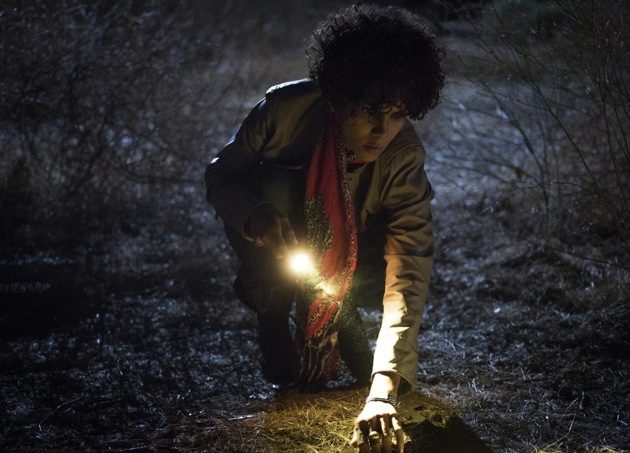REVIEW: 'The Call' Suffers From Too Many Hang-Ups (And What's With Halle Berry's Hair?)

Representing a slightly skewed take on 2004’s Cellular crossed with a lobotomized Silence of the Lambs, Brad Anderson’s high-concept thriller The Call would be an unremarkable bit of women-in-peril dreck were it not for two distinguishing factors — the sexualized sadism inflicted upon the half-dressed 16-year-old Abigail Breslin, and the equally sadistic Sideshow Bob coiffure affixed to the otherwise lovely Halle Berry. These indignities aside, there’s little to differentiate this high-pitched screamer from a particularly feverish Law and Order rerun, and it might be tough for such a film to dial in sizable auds to theaters.
One of the more high-profile films to bear the WWE Studios label in recent years, The Call features no actual grappling, yet it shows the fingerprints of its benefactor in the presence of wrestling star David Otunga, as well as a serial-killer villain (Michael Eklund) who seems less psychopath than juice-head. Perhaps it’s unfair to blame the producers for the film’s overwrought tempo, but whatever the cause, the pic’s dunderheaded emotional timbre is miles removed from the relative class of director Anderson’s previous efforts The Machinist and Transsiberian, confusing macho aggression for menace, and tightly framed screaming for suspense.
Berry stars as Jordan, a hotshot 911 operator who rules over the bustling call center known as “the Hive” — we know she’s a star when co-workers casually ask her for the institutional code for a multiple stabbing. Featuring some nice aerial photography of Downtown Los Angeles, the pic expends 10 minutes laying character foundations involving Jordan’s unseen cop father, her handsome LAPD-officer boyfriend (Morris Chestnut), and her charged relationship with an unsympathetic supervisor, then disregards these details entirely once the action gets rolling.
Receiving a 911 call from a teenage girl in the midst of a home invasion, Jordan concocts an elaborate strategy to help her evade the predator, but gives the girl away by hitting the redial button when the call is cut off. (Berry’s character will similarly vacillate between Jason Bourne-like ingenuity and howling stupidity throughout the remainder of the film.)
The girl is abducted and murdered by the unseen, catchphrase-spouting killer, and the guilt-ridden Jordan takes a leave of absence.
Try as she might, Jordan can’t avoid the call to heroism, which arrives soon, via another emergency call. Teenage Casey (Breslin), has been drugged and kidnapped from a mall parking lot, and wakes up in the trunk of a car speeding down the freeway. Through some needlessly convoluted plot machinations, she has a friend’s untraceable pay-as-you-go cell phone in her pocket, and Jordan must don the headset once again to talk her out of harm’s way.
It’s here that the film generates its only real sparks of invention, as the desk-bound Jordan is forced to coach the hysterical teen though a series of ruses to try to tip off passers-by. Unspooling more or less in real-time, the pursuit sequences manage to evoke the primary appeal of such high-concept material, for which one happily suspends disbelief just to see how long the filmmakers can stick to the premise. But no sooner can you say “this time … it’s personal” than the film disengages completely, running Jordan through some paint-by-numbers Nancy Drew routines, and veering toward the ickily exploitative as it invents reasons to remove Breslin’s shirt and tie her up.
Berry is enough of a pro to muddle through yet another underwhelming star vehicle with her dignity intact, and Breslin acquits herself well enough for a problematic role in which she’s forced to cry and scream nearly continuously. Eklund is a hulking, malevolent presence, though his scrambled-brow attempt at a psychopathic glare provoked gales of laughter at the screening attended.
Whether it’s the odd directorial tic of freeze-framing during moments of violence — perhaps intended to suggest a sort of rage-induced blackout, but which feels like a projector glitch — or the offputting cadence shifts in editing, the film hits a number of unusual technical notes, yet the overall quality is solid. Practical effects and freeway footage are well handled, as are the scenes contained entirely within the trunk of a car.
Follow Movieline on Twitter.
